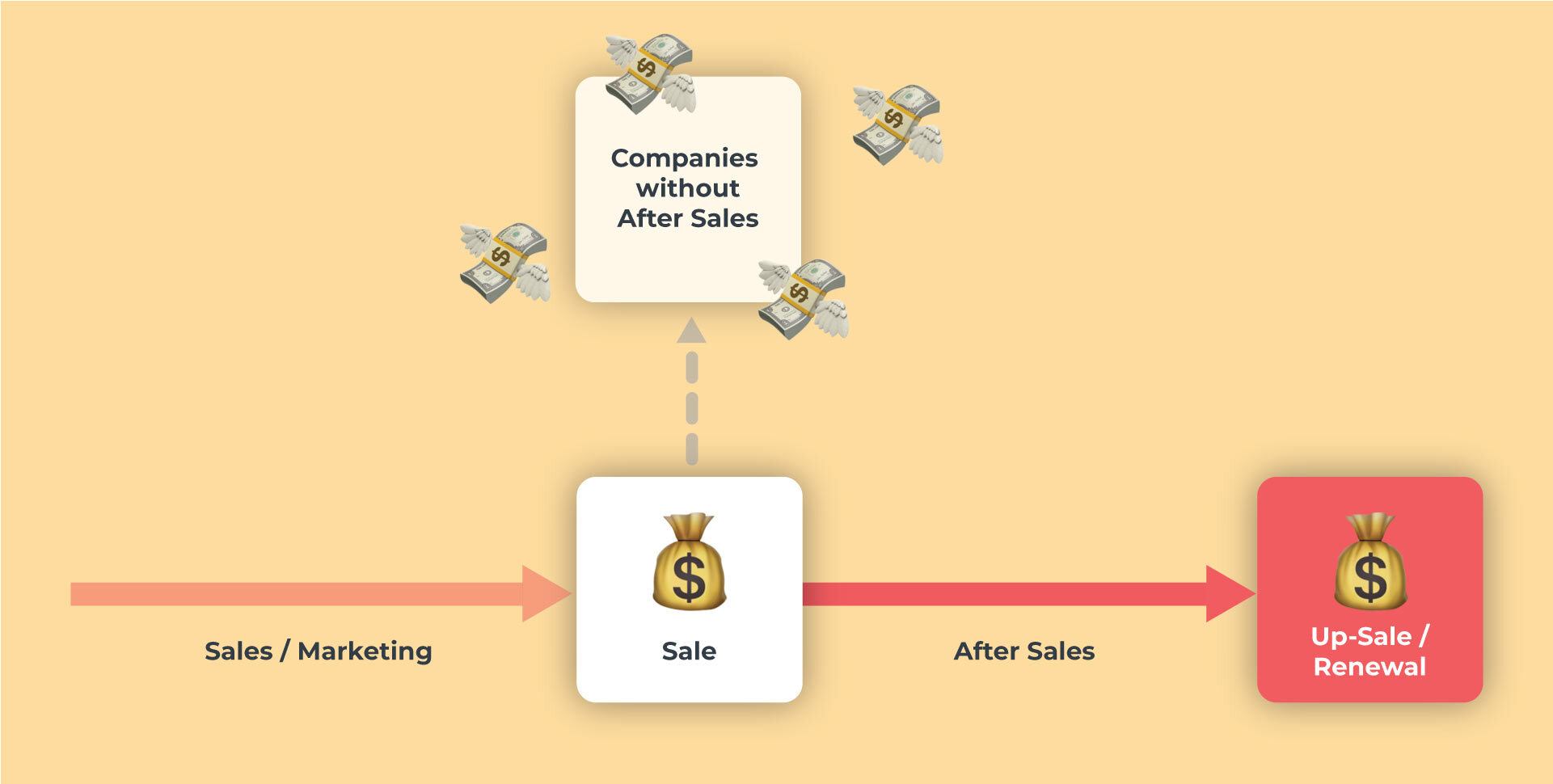Every salesperson knows that the real showdown begins after the sale with the right After-Sales Strategy. The process from first contact to closing the deal with the customer is often very labour-intensive and costly. Yet many companies minimise communication after the sale. After all, the success has been achieved and the bill has been paid. A glass of champagne to celebrate the day is fine, but then it is time to get down to work – in After-Sales.
What is hidden behind an After-Sales Strategy?
Some of you may be familiar with the situation: you are courted by companies until you finally make a purchase. But once you’ve made the purchase, the heavenly service seems to evaporate. This is where the After-Sales Strategy comes in. It ensures that the curtain doesn’t simply fall after the sale, but that customers continue to receive the VIP treatment they (usually 😉) deserve after the deal is done.
After-Sales Service refers to all services and support that a company offers its customers after the purchase of a service or product. This includes technical support, maintenance work, repairs, software updates, warranty services and customer support. The aim of After-Sales Service is to increase customer satisfaction, promote customer loyalty and ultimately ensure customer loyalty.
The After-Sales Strategy is therefore the decisive building block for long-term corporate success by delivering on promised values and keeping customers happy. After all, closing the deal is by no means a guarantee that they will stay on board in the long term.
“Customer experience is responsible for more than two-thirds of customer loyalty, surpassing the importance of brand and price.“
Gartner
Why is After-Sales Service so important?
While pre-sales service investment is undeniably important, post-sales service plays an equally critical role in the long-term sustainability of a business for three reasons:
1 Returning customers as key to sustainability
After the sale comes the ongoing relationship with the customer, and an effective After-Sales Strategy is key. An effective After-Sales Strategy strengthens customer loyalty and increases the likelihood of repeat purchases. It is also much more cost effective to retain existing customers than to constantly chase new ones.
2 Top After-Sales for more Word of Mouth Advertising
Word of Mouth recommendations are priceless! With an optimal After-Sales Strategy, satisfied and long-term customers are more likely to recommend a company to family, friends and acquaintances – exactly what we want. By the way, this can be further influenced by certain tools – see hypt.
3 Maintaining a positive Brand Image
Various studies show that a top After-Sales experience can have a positive impact on brand image, which in turn fosters loyalty to the company and contributes to long-term customer retention.
A study by a consultancy in 2020 underlines the importance:
“A whopping 96% of customers are willing to leave a company because of poor service, even if they are convinced by the products.“
hyken
Trend
Companies are increasingly recognizing that After-Sales Service is not only a necessary follow-up service after the purchase, but also offers a strategic opportunity to differentiate themselves from competitors and promote long-term customer relationships. A key aspect of this trend is the personalization of the customer experience in order to offer customers added value and increase their satisfaction and loyalty.
Digitalization plays a crucial role in improving After-Sales Service. Technologies such as artificial intelligence (AI), machine learning and digital platforms enable companies to recognize patterns in customer behavior, provide personalized recommendations and offer post-sales support services more efficiently. These technologies not only help to personalize service, but also to identify and solve problems before they become noticeable to customers.
Loyalty programs and incentives are also playing an increasingly important role in After-Sales Service. They offer customers additional value and promote loyalty.
Finally, automated tagging solutions and product analytics provide valuable insights into customer satisfaction and the effectiveness of After-Sales Service. These tools allow companies to efficiently categorize and analyze support requests to identify patterns that indicate common issues or opportunities for improvement. This allows companies to take proactive measures to improve customer satisfaction and overall service.
Long story short
Overall, the After-Sales Strategy is not just a tool for solving problems, but an investment in long-term customer satisfaction and securing the market position. A good After-Sales Strategy can also promote positive word of mouth, which in turn can acquire numerous new customers. Companies that have mastered this magic can not only retain customers, but also turn them into passionate ambassadors for their brand. In the world of business, the After-Sales Strategy thus becomes the indispensable star of the show. ⭐





